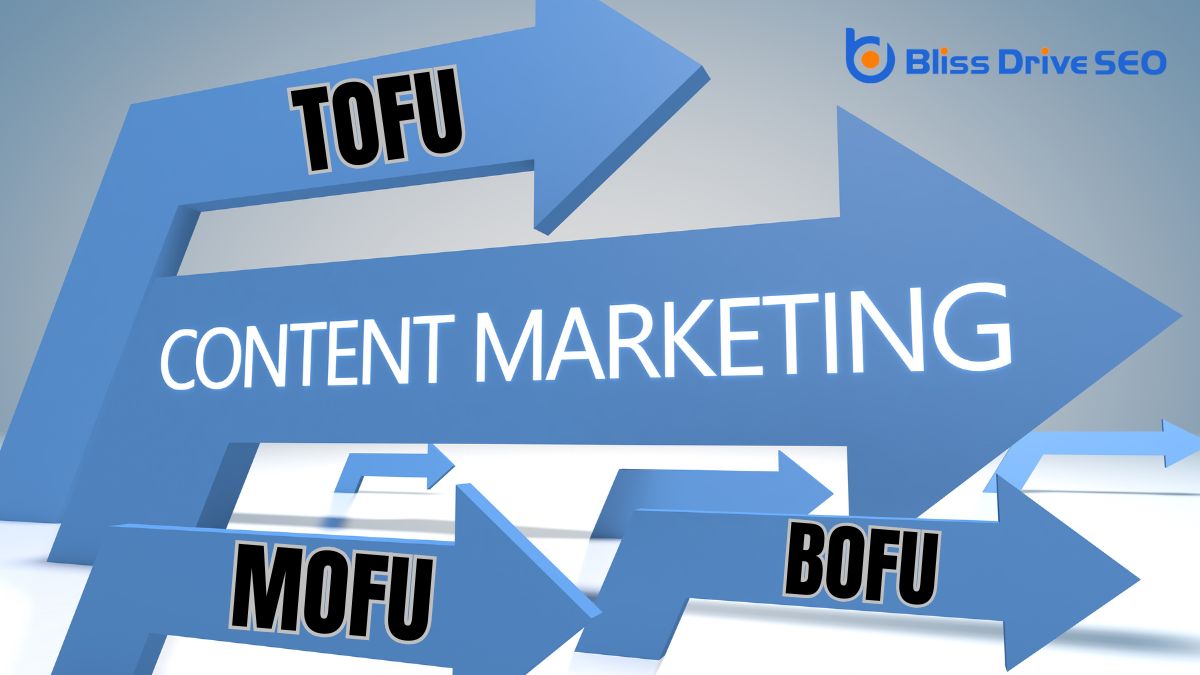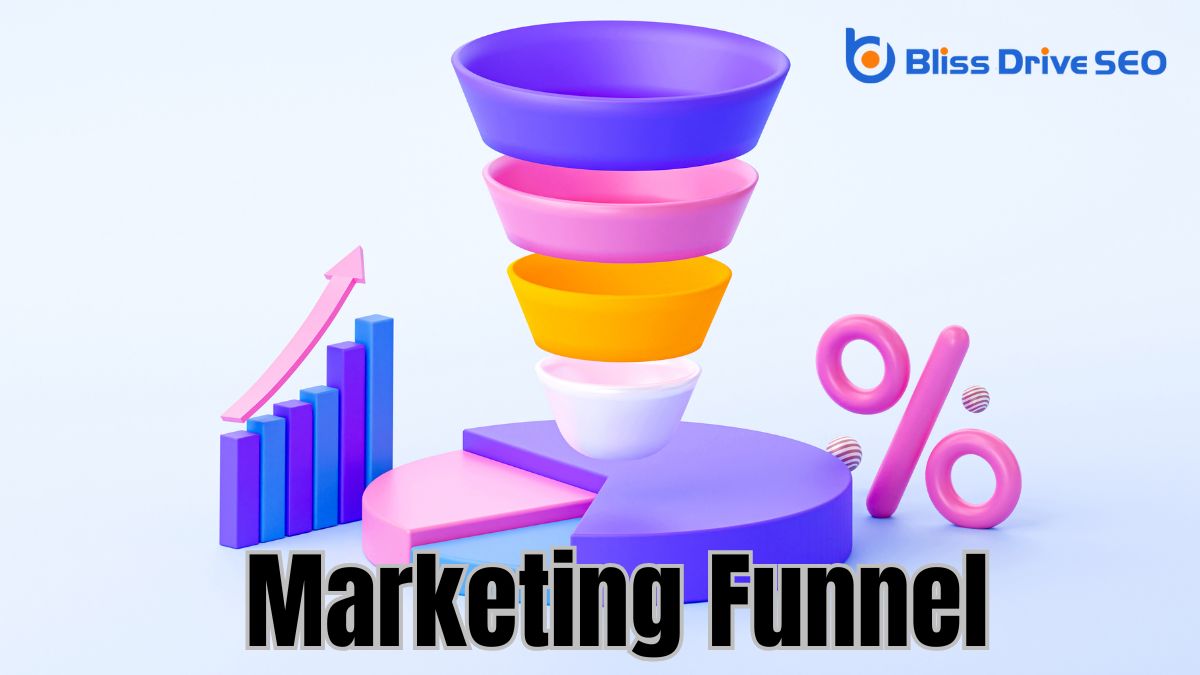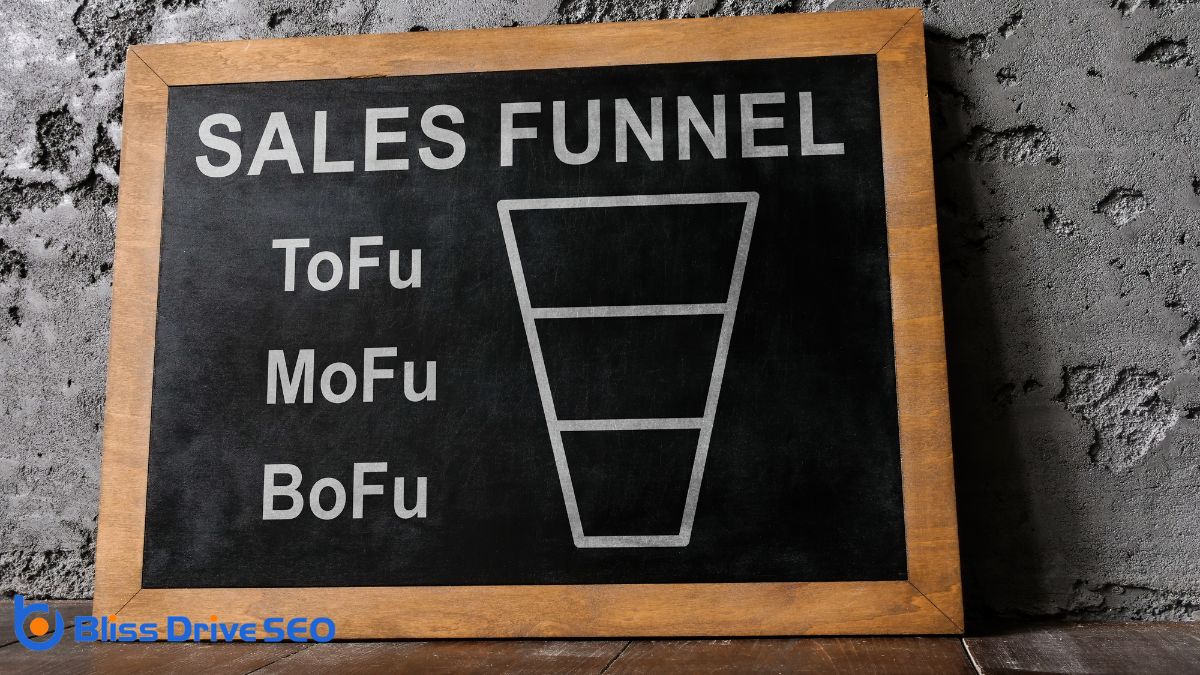Digital Marketing Services
Learn More About Us

In content marketingA strategic approach focused on creating and distributing valuable, relevant, and consistent content..., TOFU, MOFU, and BOFU represent the stages of the marketing funnel: Top, Middle, and Bottom. TOFU is about grabbing attention and building awareness with engaging content like blog posts and infographicsVisual representations of information, data, or knowledge intended to present complex information qu... to attract a broad audience. MOFU focuses on nurturing trust and interest, often using educational webinarsLive or recorded online presentations or seminars used to educate and engage an audience. and case studiesIn-depth analyses of specific instances or examples to highlight success stories or lessons learned.... to guide prospects in evaluating solutions. BOFU aims to convert interest into action with targeted content like testimonials and product demos to address specific needs and encourage purchase decisions. Discover how these strategies can optimize your marketing funnel, from capturing interest to securing conversions.

The marketing funnel is a fundamental concept in content marketing, guiding potential customers from awareness to purchase. Imagine it as a tool that helps you understand how people move through different stages before they decide to buy something from you. Each stage requires different strategies to engage and convert potential customers effectively.
In the beginning, people mightn't even know they've a problem or need. Your job is to make them aware of their issue and present your brand as a potential solution.
As they move deeper into the funnel, these prospects become more interested in learning about your offerings. It's critical for you to provide valuable information that helps them see how your product or service stands out from the competition.
When they're ready to make a purchase decision, they're at the bottom of the funnel. Here, you need to reassure them by addressing any last-minute concerns and highlighting benefits or testimonials. Understanding this funnel concept enables you to tailor your content to meet the needs of your audience at every stage. By doing so, you're not just pushing sales; you're building long-term relationships and trust with your customers.
At the top of the marketing funnel, TOFU (Top of Funnel) plays an essential role in capturing attention and sparking interest. It's the stage where potential customers first encounter your brand. Your goal here is to reach as many people as possible and create awareness about your products or services. At this point, people may not even know they have a problem that your product can solve. Your focus is to engage them and make them curious enough to learn more.
Here's why TOFU is vital:
Understanding TOFU helps you set the stage for nurturing relationships with your audience. By effectively defining and implementing TOFU strategies, you lay the groundwork for guiding prospects through the rest of the funnel, eventually turning them into loyal customers.
Crafting effective TOFU content is all about capturing attention and sparking curiosity. At the top of the funnel, your goal is to attract a broad audience by addressing their needs and interests. Start by identifying common problems or questions your potential customers might have. Use engaging formats like blog posts, infographics, and videos to present information in a way that's easy to digest.
To create content that stands out, focus on providing value without immediately selling your product. OfferThe specific product or service being promoted by affiliates. educational insights or entertaining content that resonates with your audience's emotions or challenges. Remember, at this stage, you're building awareness, so aim for content that encourages sharing and discussion.
Use attention-grabbing headlines and visuals to draw people in. Think about what makes your audience tick and tailor your content to those interests. SEO plays a pivotal role here, so optimize your content with relevant keywordsWords or phrases that users type into search engines to find information. to improve visibility.
Moving into the middle of the funnel (MOFU), focus on nurturing your audience's interest and building a relationship of trust. At this stage, your audience is aware of your brand but needs more information to move forward. They're comparing options and evaluating which solution meets their needs best. Your role is to provide value and guidance, helping them see how your offering can solve their problems.
To effectively engage your audience, consider these strategies:
To effectively capture and maintain your audience's interest in the middle of the funnel, regularly creating content that resonates with their specific needs and concerns is important. At this stage, your audience already knows about your brand and is evaluating their options. They need content that helps them explore deeper into understanding how your products or services can solve their problems. Crafting MOFU content means focusing on building trust and providing valuable insights.
Start with case studies and success stories that showcase real-life applications of your offerings. These stories provide proof of value and reliability.
Webinars and detailed guides are also effective, as they allow you to engage directly with potential customers, answering their specific questions and demonstrating expertise.
Additionally, consider creating comparison guides and product demos that highlight your unique selling points. This helps your audience make informed decisions by clearly outlining the benefits over competitors.
At the BOFU stage, your focus shifts to crafting conversion-focused content that drives decisive action.
You'll need to create effective call-to-actions that resonate with your audience and guide them toward a purchase.
Personalizing the buyer journey experience is pivotal here, ensuring each interaction feels tailored and relevant.
As you immerse yourself in crafting conversion-focused content strategies, mastering BOFU (Bottom of the Funnel) tactics is essential for turning potential leads into satisfied customers. At this stage, your aim is to address any remaining doubts and reinforce the decision to choose your solution. You need to provide content that reassures, informs, and convinces. This is where you can truly engage your audience with personalized, targeted messaging that speaks directly to their needs.
Consider these tactics for your BOFU strategy:
Crafting effective call-to-actions (CTAs) is crucial in nudging your audience toward a final decision at the BOFU stage. At this point, your leads have journeyed through the awareness and consideration stages. Now, they're on the brink of conversion. Your CTAs should guide them with clarity and urgency, prompting immediate action. Use strong, direct language like "Get Started Now" or "Claim Your Offer" to convey urgency and value.
To make your CTAs more compelling, make sure they're visually distinct. A contrasting color or bold font can draw attention, making them stand out on your page. Also, position them strategically. Place CTAs where your audience naturally gravitates, such as at the end of an engaging blog post or alongside a persuasive product description.
Don't forget to tailor your CTAs to specific audience needs. A personalized message resonates more deeply, enhancing the likelihood of conversionThe completion of a desired action by a referred user, such as making a purchase or filling out a fo.... Additionally, test different CTAs to see which resonates best with your audience. A/B testingA method of comparing two versions of a web page or app against each other to determine which one pe... can reveal what language, design, or placement drives the most engagement. By refining your CTAs, you're not just suggesting action; you're paving a clear path for your audience to follow.
Traversing the BOFU stage demands a keen focus on personalizing the buyer journey experience. At this point, your audience is ready to make a decision. Your role is to guarantee they feel valued and understood. You must tailor interactions to meet their unique needs and preferences. PersonalizationTailoring content and offers to individual users based on their behavior, preferences, or demographi... at this stage builds trust and encourages conversions. To effectively personalize their journey, consider these tactics:
When you're developing BOFU (Bottom of the Funnel) content, the goal is to convert prospects into customers by addressing their specific needs and concerns. At this stage, your audience has shown interest in your solution and is considering a purchase. It's vital to provide content that reassures them of the value and benefits of choosing your product or service over competitors.
You should focus on content types like case studies, testimonials, product demos, and detailed comparisons. Case studies demonstrate how others have successfully used your product, providing real-world proof of its effectiveness. Testimonials offer personal accounts from satisfied customers, building trust and credibility. Product demos showcase the functionality and ease of use, helping prospects envision themselves using the product.
Detailed comparisons highlight your unique selling points and help prospects understand why your solution is the best fit.
Remember to address any lingering objections or questions prospects might have. This could include offering guarantees, FAQs, or transparent pricing information. Providing clear calls-to-action (CTAs) is essential. Encourage prospects to take the next step, whether it's scheduling a call, signing up for a trial, or making a purchase, ensuring a smooth progression from interest to conversion.
To effectively align your content with the buyer journey, start by mapping content to the specific stages your audience goes through.
Tailor your messages to engage prospects at each step, ensuring relevancy and connection.
How can you guarantee your content resonates with your audience at every stage of their buying journey? The key lies in mapping your content to the specific stages of the buyer's journey: TOFU (Top of Funnel), MOFU (Middle of Funnel), and BOFU (Bottom of Funnel). Each stage demands different types of content that cater to the evolving needs and emotions of your potential customers.
At the TOFU stage, focus on creating awareness and capturing interest. Consider these content types:
As prospects move to the MOFU stage, they're evaluating options. Here, content should guide and convince:
Finally, at the BOFU stage, aim to convert interest into action. Offer:
Crafting messages that truly engage your audience requires more than just good writing—it's about understanding where they're in their buyer's journey and delivering the right message at the right time. To create this engagement, you need to align your content with the specific needs and questions buyers have at each stage of their journey: TOFU (Top of Funnel), MOFU (Middle of Funnel), and BOFU (Bottom of Funnel).
At the TOFU stage, your audience is seeking information and solutions to a problem. Here, your content should inform and educate, drawing them in with blog posts, eBooksLong-form digital publications used to provide in-depth information on a specific topic., or videos that address their initial questions.
Progressing to the MOFU stage, your audience is evaluating options. This is your chance to build trust and showcase your expertise with case studies, webinars, or detailed guides.
Understanding your audience's journey is only the beginning; the next step is to turn that understanding into action by optimizing conversion opportunities. Aligning your content with the buyer's journey guarantees that you're meeting their needs precisely when they're ready to engage. It's essential to provide the right content at the right time, whether they're just discovering your brand (TOFU), considering their options (MOFU), or ready to make a purchase (BOFU).
To optimize your conversion opportunities, consider the following strategies:
When you're evaluating the effectiveness of your content marketing funnelThe stages of a buyer's journey, from awareness to consideration to decision, supported by targeted ..., measuring funnel success becomes important. To do this, focus on key performance indicators (KPIs) that align with each stage of the funnel—TOFU, MOFU, and BOFU.
For TOFU (Top of Funnel), track metrics like website traffic, social media engagementThe interaction between a brand and its audience on social media, including likes, comments, shares,..., and content views. These will show how well you're attracting new visitors.
At the MOFU (Middle of Funnel) stage, emphasize lead generationThe process of attracting and converting prospects into potential customers.. Monitor email sign-ups, webinar registrations, and content downloads. These indicators will reveal how effectively you're nurturing potential leads. Make sure your content addresses their needs and guides them further down the funnel.
For BOFU (Bottom of Funnel), conversion rates are important. Look at how many prospects become paying customers. Analyze the sales cycle length and customer acquisition cost to assess efficiency. High conversion rates suggest your content successfully convinces prospects to act.
Regularly reviewing these metrics helps you identify strengths and areas for improvement. Adjust your strategies based on data insights to enhance overall funnel performance. Remember, the goal isn't just to generate leads but to convert them into loyal customers through targeted content.

To effectively incorporate TOFU, MOFU, and BOFU, you need to align your content with each stage of the funnel. Start by crafting content that not only meets the needs of your audience at each stage but also guarantees a smooth shift between them.
Traversing the intricate terrain of content marketing demands a strategic alignment of your content with each stage of the sales funnel—TOFU (Top of Funnel), MOFU (Middle of Funnel), and BOFU (Bottom of Funnel). This alignment guarantees that your content effectively guides potential customers through their journey, addressing their needs and concerns at each stage.
At TOFU, your content should attract attention and build awareness. Use blog posts, social media, or infographics to draw in a broad audience.
For MOFU, the focus shifts to engaging your audience and nurturing leads. Here, you can provide in-depth guides, whitepapers, or webinars to establish trust and offer solutions.
BOFU content aims to convert prospects into customers. Case studies, testimonials, and free trials can help seal the deal. When you align your content with the funnel stages, you create a seamless customer experience that feels purposeful and personal. Consider these emotions to connect with your audience:
Crafting a smooth shift between the TOFU, MOFU, and BOFU stages can greatly enhance your content marketing strategy. Start by clearly defining the buyer's journey and creating content that matches each stage's needs. You want to guide your audience seamlessly from awareness to assessment and ultimately, decision-making.
At the TOFU stage, focus on providing valuable, informative content like blog posts or infographics that address your audience's pain points. Once they engage, use calls-to-action (CTAs) that direct them to MOFU content—such as webinars or detailed guides—that offer deeper insights and solutions. This progression should feel natural, encouraging prospects to seek more information without feeling pressured.
For MOFU to BOFU, personalize content by understanding prospects' specific needs and preferences. Offering case studies or free trials can help demonstrate your product's value. Use analytical tools to track interactions and customize follow-up content, ensuring it aligns with their journey and interests.
You've now got a clear understanding of TOFU, MOFU, and BOFU in content marketing. By aligning your content with each stage of the buyer's journey, you'll engage prospects effectively and guide them smoothly down the funnel. Remember to tailor your content to meet the specific needs of your audience at each stage, and keep measuring your success to fine-tune your strategies. Integrate these insights, and you'll enhance your marketing efforts and drive better results.
